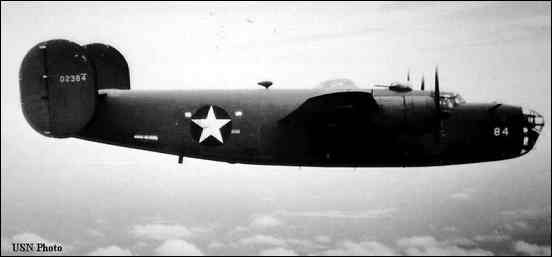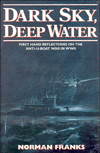The Loss of U-84
by Dr. Axel Niestlé
U-84 (Kapitänleutnant Horst Uphoff) left Brest on 10 June 1943 for its seventh operation in the Atlantic Ocean. After being supplied with fuel and provisions from the auxiliary tanker U-536 in the mid-Atlantic on 23 June 1943, U-boat Command ordered the boat on 6 July to patrol the waters around Cuba, given its commander a free hand to select focal points in his assigned operational area.
According to later radio reports from U-84 the boat operated mainly in the southern part of the Gulf of Mexico and the northern exit of the Yucatan-Strait. Resulting from the loss of the supply U-boat U-459, which was envisaged to refuel all boats then operating in the Caribbean theatre on their homebound trip, U-boat Command ordered U-84 on 31 July 1943 to return home owing to the uncertain supply situation. In case of a necessary refuelling on the homeward trip U-boat Command had earmarked U-117 to supply U-84.
U-84 reported last at 0322 on 7 August from naval grid square DC 8596, giving its remaining fuel state and provisions as 36 m³ and three weeks. After the loss of U 117 had become obvious to U-boat Command, U-84 was ordered on 14 August to refuel on about 18 August from the outbound U-760 in naval grid square CD 7925 to continue at economical speed to Bergen/Norway. When U-760 reported being depth charged on 17 August on the point of rendezvous with U 84, BdU ordered a shift of the R/V to 19 August 1943 at 1600 in square CD 4516. When U 760 finally reported on 25 August that it had started its return on 23 August after having failed to meet U-84 on 19 August or thereafter, U-boat Command posted U 84 as missing on the return trip effective from 25 August. It was considered possible that its loss resulted from a bombing attack against an unknown U-boat monitored on 7 August 1943 in square DC 9558 or from the depth charge hunt reported by U-760 on the 17 August at the prearranged R/V point.
After the war the allied Assessment Committee attributed the loss of U-84 to an attack carried out in position 27°09´n/37°03´w on 24 August 1943 at 1616 by an Avenger of VC-13 squadron USN based on the escort carrier USS CORE. The aircraft first sighted a U-boat emerging from a rain squall which started to submerge soon afterwards. Dropping a Mk 24 homing torpedo 400 feet ahead of the swirl 60 seconds after the boat submerged, the aircrew observed no indication for its explosion but eight minutes later saw a patch of oil one mile from the swirl, ahead and slightly to the left of the boats course when it submerged. Subsequently the air crew recorded air bubbles and oil spreading out on the surface covering an area 300 by 700 feet by the time the aircraft left the scene. It was presumed later that the boat considered sunk was identical with a U-boat already attacked close by the day before by six aircraft from the USS CORE.
Clearly the Committee failed to realise in its attribution that the attack of the Avenger had been directed against U-172 which, however, escaped undamaged. According to its war diary the boat conducted a crash-dive after sighting an aircraft at 1613 in naval square DF 9746. Submerging to 50 metres, nothing further was observed until 1700 when a single distant detonation sounding like a torpedo or bomb was heard. From the observation by U-172 it is virtually certain that the homing torpedo malfunctioned. This is supported by the observation of the aircraft gunner who watched the torpedo to veer slightly left after entering the water, travelling some twenty feet, and finally plunging from view. The origin of the explosion heard by U-172 at 1700 is uncertain. Perhaps it resulted from the homing torpedo hitting ground after descending to the seabed.
Likewise the attack carried out on the 23 August by aircraft from the USS CORE was clearly directed against the homebound U-406 which was passing through the area of operations. In its war diary U 406 recorded an attack in square DF 9782 flown by a total of eight carrier aircraft, lasting from 1525 until 1646. Repeated strafing attacks resulted in two crewmen killed and three more wounded. Finally the boat was able to dive with depth charges and a MK 24 homing torpedo dropped thereafter exploding well above the boat. Most of the damage received from the attacks was repaired during the following days.
In attributing the loss of U 84 the committee also ignored the fact that according to the orders given by U-boat Command to U 84 on 14 August 1943 the boat could not have been present in the area of the attack because the R/V point with U-760 was located some 700 nm to the Northwest of the attack position. Additionally U 84 had been ordered on 14 August to return directly to Bergen in Norway owing to its general material condition to be used as a training boat in the Baltic thereafter. The presence of U-84 in the attack area during the period 23/24 August 1943 is only likely when it is assumed that the boat acted against repeated orders from U-boat Command in order to refuel from U-847 in square DF 8635 like other boats returning from the Caribbean. Taking its last known position on 7 August 1943, it is probable that U-84 would have arrived at the R/V point already some days before the first attack on 23 August. However, none of the other boats assembled at the supply position ever reported to have sighted or met U-84 before the reported sinking date.
The attack the sank the U 84
U-boat Command already considered the possibility that U 84 was lost in the attack monitored on the 7 August 1943. Liberator B-4 of VB-105 USN, operating from Bermuda, sighted a surfaced U-boat steering a course of 90° true, identified as a probable 500 tons Type VII boat, at 1045 in position 27°55n/68°30w. The aircraft attacked it in the face of heavy anti-aircraft fire with a stick of four Mk47 depth charges, reporting a straddle with at least two charges exploding on the starboard side and one on the port side. The fourth charge probably became a dud due to technical failure of the arming wire. The U-boat attacked continued in a tight turn to the left for the next 16 minutes, exchanging gun-fire with the circling aircraft. Then the boat started to dive, whereupon the aircraft dropped a Mk 24 Mine 100 feet forward of the swirl just as the top of the conning tower went under. Due to reduced visibility owing to a rainsquall no direct results were observed but about twenty minutes later a narrow oil slick extending crosswind for about ¾ of a mile was observed close to the diving position. Several other similar streaks appeared within the next three hours while the aircraft circled the location of attack.

A B-24C aircraft. A similar aircraft sank the U-84.
The attack was later classified as "U-boat present and probably damaged". However, as none of the boats returning from patrol reported the encounter it is certain that the boat attacked did not return from patrol. The only boat known to have been in the vicinity of the attack was the 500 tons Type VII B boat U 84 which is expected to have steered a course of 90° true towards the East. From the post-attack evidence it is possible that the Mk 24 Mine, which entered the water within effective range, hit the boat and sank it. The distance between the last reported position DC 8596 and the reported attack position in DC 9558 is some 158 nm. Taking a somewhat greater navigational error for the part of the aircraft operating in the open Atlantic some 335 miles from base and the time-span until the attack it is reasonable that U 84 covered the distance in the remaining time.

A type VIIB boat, same type as U-84 was.
It is therefore proposed to amend the records to show that U 84 was lost on 7 August 1943 at 27°55n/68°30W to a Mk 24 homing torpedo dropped by the Liberator B-4 of VB-105 USN.
Berlin/Dabendorf, 13.12.1995 with major amendments on 25 January 2001 and 10 February 2002.
This article was published on 23 Apr 2002.
Buy this title at amazon.co.uk |
Books dealing with this subject include
|


